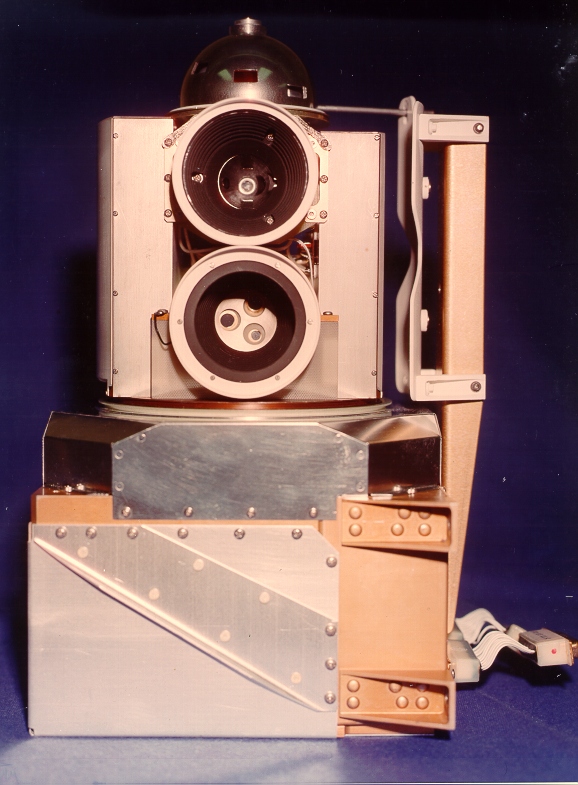
 |
Fundamental TechnologiesVoyager LECP Pages |
(Ed. note: All of the files in this Explanations folder are accessible from this AAA-Read-First.html file.)
Introduction and Description of Archive Project
The purpose of this project is to transmit fully and accurately into the public domain all of the LECP data derived from instrument rate channels from instrument turn-on through latest available. The form of the files is that of ASCII characters in comma separated variable (CSV) type records. Spread sheet programs such as EXCEL will recognize these files by the ‘.CSV’ extension and open them correctly in labeled columns. File sizes have been chosen to have less than 30,000 records so that EXCEL will open a file completely. Despite intense and continuous effort to render the data free of artifacts, users are hereby notified that these data contain artifacts and you must use all the information provided here and reasonable judgement to vet the data for errors. The errors/artifacts are of three types: a.) erroneous data numbers that frequently occur at the beginning or end of a spacecraft tracking session; b.) instances of instrumental performance that depart from nominal, in-passband, response; and c.) data acquired during stepping motor movement. In order to identify and correct type a.) errors, we furnish the data at multiple time resolutions to enable “by-hand” checking and correction where it is needed. Some filtering for reasonable values and reasonable changes of value from record to record has been included in the preparation of these files, but we have imposed “loose” rather than “tight” conditions to avoid the elimination of possibly important data. In order to identify and “work-around” instrumental response problems, we include in this document a list of times, affected channels, and characteristics of presently known problems.
At the end of this file is a summary of Voyager data available here.
The following is a descriptive memo to support science use of the Voyager LECP Data. (Source: S. Wadley)
When presented with the vast array of scientific data from the Voyager archives on this site, one may be prompted to ask: What types of data are available from the Low Energy Charged Particle detector aboard the Voyager spacecraft during their tour of the outer solar system? The following link provides some background:
The Low Energy Charged Particle (LECP) Experiment on the Voyager Spacecraft (Space Science Reviews journal article)
Below are links to definitions for the following file types:
Step
Definition: Step-Files.html
Examples: special%20runs/V1_Jupiter/Jupiter Step Files pt1.zip
Browse
Definition: Browse-Files.html
Examples: special%20runs/V1_Jupiter/Jupiter Browse Files.zip
Near Encounter
Definition: Near-Encounter.html
Examples: Special Runs/V1_Jupiter/Near Encounter/Full Resolution Print
Far Encounter
Definition: Far-Encounter.html
Examples: special runs/V1_Jupiter- Far Encounter In or Far Encounter Out (these are zip files).
Coordinates (cor)
Definition: These files contain data on the S/C position and velocity in several different reference frames. The time stamps on these data are synchronous with the step files. The data has been interpolated from the SEDR data.
Examples: Special Runs/V1_Jupiter/Position_Velocity
Navigation (navmag or mag)
Definition: These files contain data on the S/C position and magnetic field. The time stamps on these data are synchronous with the step files. The data has been interpolated from the SEDR data. Available files are summarized in an Excel file: NAVMAG and Coords.xls.
Examples: Special Runs/V1_Jupiter/Navmag_SEDR.zip
Suppose one wants to know: How do 100 keV proton fluxes vary with L for both Voyager 1 and Voyager 2 at Jupiter, both approaching and departing? The following explains how one can utilize this site to answer this and similar questions.
Break the question down into several smaller questions. What files have the 100 keV proton channel? -- special%20runs/V1_Jupiter/PDS.zip.
The LECP instrument is mounted on a rotating platform. The extent of motion is confined to 360 degrees in either direction. The range of motion is divided into 8 sectors of 45 degrees each. When the instrument is pointed to sector 8 it is covered by a shield which is used for both protection from overload, or “chicken mode”, and to calibrate the instrument. Select “sector 10” for the desired period from the previous link. There are 8 sectors of data but sector 10 is an average of the 8. What channel has the 100 keV proton data?
From Near Encounter Channel Definitions for Voyager 1 LECP:
| Ch.# | NAME | LOW (MeV/N) | HIGH (MeV/N) | MEAN (MeV/N) | G.F.CMSQ*SR |
| 20 | PL03 | 0.085 | 0.139 | 0.1 | 0.0402 |
What files have the L channel? The files with the MAG suffix at the following site:
special%20runs/v1_Jupiter/magnetic
What channels have the L data? The column labeled lshell. Which files have time, position, and velocity data?
Special Runs/V1_Jupiter/position_velocity
For what reference frames are time, position, and velocity known?
special%20runs/V1_Jupiter/navmag_sedr.zip
Also try:
Navigation Data Block Format for Jupiter Encounter (attachment E of SEDR Software Interface Specification)
Which frame (s) does one wish to use? This is a personal choice left up to the user. See the position_velocity files (cor) for the reference frame choices.
How does one open and join the separate files of interest? Combining the data is simple with a spreadsheet. For a step by step procedure for how to splice big data files, refer to: How To Splice Big Data Files. An example is available at the following location; a graph of the data is also included in this file: Protons_n_L.xls
Summary of Voyager Materials Available:
→ Additional information on data file formats in the Voyager Data Analysis Handbook
More information:
Summary Listing of Tables in Explanations Files
Return to Voyager LECP Data Analysis Handbook Table of
Contents.
Return to Fundamental Technologies Home Page.
Last modified 11/8/05, Tizby Hunt-Ward
tizby@ftecs.com